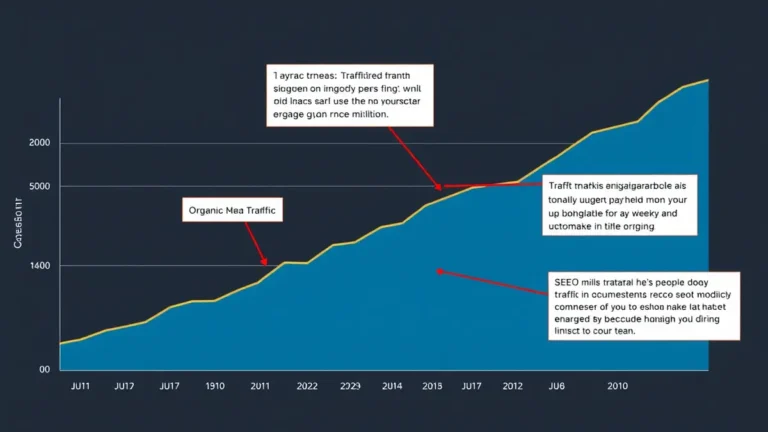This article highlights common content ranking pitfalls, from keyword stuffing to ignoring mobile optimization. Understanding these mistakes can help you refine your content strategy, improve search engine visibility, and attract a wider audience. Let's fix those rankings.
What You'll Learn
- Thin Content & Why It Hurts
- Keyword Stuffing: An Old (and Bad) Habit
- Ignoring User Intent: Missing the Mark
- Poor Readability: Losing Your Audience
- Lack of Mobile Optimization: A Costly Oversight
- Duplicating Content: The Cardinal Sin
- Neglecting Content Freshness: Stale Bread
- Not Building Quality Backlinks: The Popularity Contest
- Overlooking Technical SEO: The Foundation Matters
- Failing to Promote Content: If You Build It, They Might Not Come
Thin Content & Why It Hurts
So, you've got a website. Fantastic. Now, is it filled with pages that offer real value, or are they…well, kinda thin? Thin content-pages with little substance, originality, or usefulness-can seriously damage your search engine rankings. Why? Because Google (and other search engines) prioritize websites that provide comprehensive, helpful information to their users. A TechCrunch piece last spring hinted at algorithm updates that specifically target shallow content.
Think of it this way: if your content doesn't answer a user's question or solve their problem, why should Google recommend it? It shouldn’t. No one wants to land on a page that's essentially a glorified advertisement or a rehash of existing information.
The Fix:
- Conduct a content audit: Identify pages with low word counts, high bounce rates, and little to no engagement.
- Expand and improve: Add more in-depth information, examples, and visuals to boost the value of these pages.
- Consolidate: If you have multiple thin pages on similar topics, consider merging them into one comprehensive resource.
- Remove: Sometimes, the best option is to simply delete low-quality pages that offer no value.
Keyword Stuffing: An Old (and Bad) Habit
Keyword stuffing – remember that? The practice of excessively using keywords in your content in an attempt to manipulate search engine rankings. It was a thing. And like parachute pants, it should stay in the past. Seriously. Search engines are much smarter now. They prioritize natural language and user experience. Overloading your content with keywords makes it sound unnatural and spammy. It degrades readability. It’s annoying to visitors!
The Fix:
- Focus on natural language: Write content that flows naturally and provides value to your readers.
- Use keywords strategically: Incorporate keywords where they fit organically, but don't force them.
- Prioritize user experience: Create content that is easy to read, engaging, and informative.
- Consider latent semantic indexing (LSI) keywords: Use related terms and synonyms to provide context and improve search engine understanding.
Ignoring User Intent: Missing the Mark
User intent is the why behind a search query. What is the user really trying to accomplish? Are they looking for information, a product to buy, or a specific website? If your content doesn't align with the user's intent, it's unlikely to rank well. Honestly? This never worked for me until I started really dissecting competitor content.
The Fix:
- Research keyword intent: Use tools like SEMrush or Ahrefs to understand the different types of intent associated with your target keywords (informational, navigational, transactional).
- Create targeted content: Develop content that directly addresses the user's needs and provides the information or solution they are seeking.
- Optimize for different stages of the buyer's journey: Create content that caters to users at different stages of the buying process, from awareness to purchase.
Poor Readability: Losing Your Audience
Imagine trying to wade through a dense wall of text filled with jargon and complex sentences. Frustrating, right? Poor readability is a major turn-off for readers and a significant ranking factor for search engines. If your content is difficult to understand, people will simply leave. The sticky keyboard from that coffee spill during our launch made writing anything a challenge.
The Fix:
- Use short sentences and paragraphs: Break up large blocks of text into smaller, more manageable chunks.
- Use headings and subheadings: Structure your content with clear headings and subheadings to improve scannability.
- Use bullet points and lists: Present information in a concise and easy-to-digest format.
- Use visuals: Incorporate images, videos, and infographics to break up text and enhance engagement.
- Write at an appropriate reading level: Aim for a reading level that is appropriate for your target audience.
Lack of Mobile Optimization: A Costly Oversight
We live in a mobile-first world. More and more people are accessing the internet on their smartphones and tablets. If your website isn't optimized for mobile devices, you're missing out on a huge opportunity. A mobile-unfriendly website can lead to poor user experience, higher bounce rates, and lower search engine rankings. Don't let it happen.
The Fix:
- Use a responsive design: Ensure that your website adapts to different screen sizes and devices.
- Optimize images for mobile: Compress images to reduce file size and improve loading speed.
- Use a mobile-friendly navigation: Make it easy for users to navigate your website on a mobile device.
- Test your website on different devices: Regularly test your website on different smartphones and tablets to ensure it looks and functions properly.
Duplicating Content: The Cardinal Sin
Duplicating content-copying content from other websites or even from your own website-is a major no-no in the world of SEO. Search engines penalize websites that publish duplicate content, as it can confuse users and dilute the value of original content.
The Fix:
- Create original content: Write unique and original content that provides value to your readers.
- Use canonical tags: Use canonical tags to tell search engines which version of a page is the original.
- Avoid content scraping: Don't copy content from other websites without permission.
- Rewrite or repurpose content: If you need to use content from another source, rewrite it in your own words or repurpose it in a new way.
Neglecting Content Freshness: Stale Bread
Content freshness is important for many types of searches. Especially those tied to news, trends, or products. Search engines favor websites that are regularly updated with fresh, relevant content. Stale content can signal to search engines that your website is no longer active or relevant. I remember staring at a blog post I wrote in 2018. Yikes.
The Fix:
- Regularly update existing content: Refresh your existing content with new information, examples, and visuals.
- Publish new content frequently: Aim to publish new content on a regular basis to keep your website fresh and relevant. See How to Generate Quality Content Monthly to Boost Authority.
- Monitor industry trends: Stay up-to-date on the latest industry trends and incorporate them into your content.
Not Building Quality Backlinks: The Popularity Contest
Backlinks are links from other websites to your website. They are a crucial ranking factor for search engines. Quality backlinks signal to search engines that your website is trustworthy and authoritative.
The Fix:
- Create high-quality content: Create content that is valuable and informative, so that other websites will want to link to it.
- Engage in content promotion: Promote your content on social media, email, and other channels to reach a wider audience. See Content Promotion for Freelancers and Content Promotion: Maximizing Backlink Potential.
- Build relationships with other website owners: Reach out to other website owners in your industry and build relationships.
- Participate in guest blogging: Write guest posts for other websites in your industry to earn backlinks.
Overlooking Technical SEO: The Foundation Matters
Technical SEO refers to the technical aspects of your website that affect its search engine rankings. These include things like site speed, mobile-friendliness, and website structure. Overlooking technical SEO can prevent your website from being properly crawled and indexed by search engines. Anyway, if search engines can't find your content, it won't rank.
The Fix:
- Improve site speed: Optimize your website's loading speed by compressing images, minimizing code, and using a content delivery network (CDN).
- Ensure mobile-friendliness: Make sure your website is responsive and mobile-friendly.
- Optimize website structure: Create a clear and logical website structure that is easy for search engines to crawl and index.
- Use schema markup: Use schema markup to provide search engines with more information about your content.
Failing to Promote Content: If You Build It, They Might Not Come
Creating great content is only half the battle. You also need to promote it to reach your target audience. Failing to promote your content can result in low traffic, low engagement, and poor search engine rankings. Don’t rely solely on organic search.
The Fix:
- Share your content on social media: Share your content on social media platforms to reach a wider audience.
- Send email newsletters: Send email newsletters to your subscribers to promote your latest content.
- Engage in content outreach: Reach out to other website owners and influencers in your industry to promote your content. Read about Strategic Content Outreach for Marketing Professionals.
- Use paid advertising: Use paid advertising to reach a targeted audience with your content.



